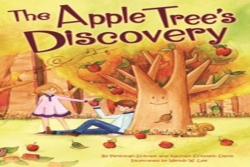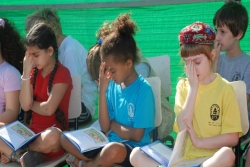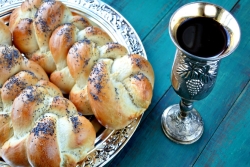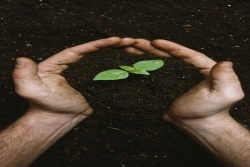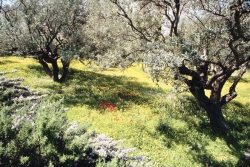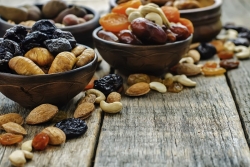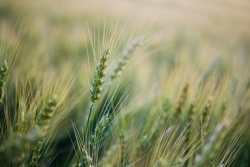Displaying 71 - 80 of 103
The Apple Tree’s Discovery
A litle apple tree is jealous of the big tall oak, until one day it discovers something surprising. This Tu BiShvat story teaches that everyone has qualities that make them special in a unique way, and is a lesson about patience and the passing of time.
Jewish Values: Public Health & the Environment
The relationship between the environment and the health of living organisms is inseparable. Water, air, land, and soil are critical to the survival of all living creatures.
Planting “Trees” to Fulfill the Dream of Israel’s Founders
Tu BiShvat (Jewish Arbor Day) is the time of year when Israeli schoolchildren plant trees. Perhaps it’s no coincidence that a teacher instituted the tree-planting custom.
Wildfire Recovery: A Tu BiShvat Tale
When a wildfire leveled my home when I was 20, I fell into a deep depression. Later, when I began to re-engage, I started to associate my emergence with Tu BiShvat.
How We're "Rooting" Reform Judaism in the Sands of Holon
Miraculously, a delicate network of threads is emerging amongst us, linking us heart to heart.
Tu BiShvat Activities to Do at Home
The Jewish New Year of the Trees, or Tu BiSh’vat, lends itself to many home observations and activities. Here are some ideas for crafts, planting, quiet activities, and more.
Tu BiShvat: Customs and Rituals
The Jewish mystics of the 17th century, the Kabbalists, created a special ritual—modeled after the Passover seder—to celebrate God's presence in nature. Today in modern Israel, Tu BiShvat has become a national holiday, a tree planting festivaTu BiShvat is not mentioned in the Torah. Scholars believe the holiday was originally an agricultural festival, corresponding to the beginning of spring in Israel. But a critical historical event helped Tu BiShvat evolve from a simple celebration of spring to a commemoration of our connection to the land of Israel. After the destruction of the Second Temple in 70 C.E. and the exile that followed, many of the exiled Jews felt a need to bind themselves symbolically to their former homeland. Tu BiShvat served in part to fill that spiritual need. Jews used this time each year to eat a variety of fruits and nuts that could be obtained from Israel. The practice, a sort of physical association with the land, continued for many centuries.l for both Israelis and Jews throughout the world
Tu BiShvat: History
Although the celebration of Tu BiShvat has a long and varied history, the theme most commonly ascribed to the holiday today is the environment.
Have a Tu BiShvat Seder
You may have heard of a Passover seder, but did you know that many people celebrate Tu BiShvat with seders also? Learn about how to host your own Tu BiShvat seder.
What are the Seven Species?
Wheat, barley, grape, fig, pomegranate, olive, and date. Collectively they are known as the sheva minim, the seven species of sacred fruits and grains grown in the Land of Israel.
